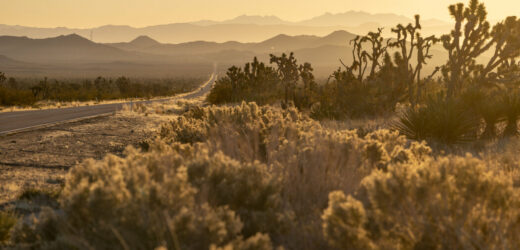WASHINGTON — President Biden on Tuesday will designate two new national monuments in the Southwest, insulating from development a half million acres in Nevada that are revered by Native Americans and 6,600 acres in Texas that were once admired by the writer Jack Kerouac.
In southern Nevada, Mr. Biden will protect a large portion of the Spirit Mountain area, encompassing some of the most biologically diverse and culturally significant lands in the Mojave Desert. Near El Paso, Texas, he will establish the Castner Range National Monument on a former artillery range along rugged canyons and arroyos that rise out of the desert near the Franklin Mountains.
The Spirit Mountain area, also known by the Mojave name Avi Kwa Ame, is the largest such monument that Mr. Biden has designated to date, and only the second national monument created specifically to protect Native history.
Avi Kwa Ame is considered the creation site for Yuman-speaking tribes like the Fort Mojave, the Cocopah, the Quechan and the Hopi. Native tribes, environmental groups and local and state leaders have been seeking the designation for more than a decade.
Castner Range, located at the Army base Fort Bliss, served as a training and testing site for the U.S. Army during World War II, the Korean War and the Vietnam War until it closed in 1966. The range includes archaeological sites, some prehistoric, that feature cave etchings made by Native Americans and stone shelters built by ranchers more than a century ago. The terrain is filled with Mexican yellow poppies, and serves as a habitat for the checkered whip tail lizard, desert cottontail and Western desert tarantula.
The Biden Administration’s Environmental Agenda
It has also been littered with thousands of rounds of unexploded ordnance. Once the area is made safe for public access, Castner Range is intended to expand access to nature for the historically underserved communities bordering the range, according to a White House statement. In the 1950s, the novelist Jack Kerouac extolled the view from the range in “The Dharma Bums,” writing of seeing “all of Mexico, all of Chihuahua, the entire sand-glittering desert of it, under a late sinking moon that was huge and bright.”
Mr. Biden is using the authority of the Antiquities Act of 1906 to establish the new monuments, which will insulate them from development.
About 33,000 acres of the Spirit Mountain area were already protected under the Wilderness Act of 1964. The newly expanded monument will create a corridor that links the Mojave National Preserve and the Castle Mountains National Monument in California to the Sloan Canyon and Lake Mead national recreation areas in Nevada and Arizona.
That would ensure a migratory path for desert bighorn sheep and mule deer, and protect critical habitat for the desert tortoises, bald eagles, peregrine falcons, western screech owls and Gila monsters that are native to the region. Some 28 species of native grasses, a number of them rare, also grow there, as well as some of the oldest and largest Joshua trees in the United States.
Mr. Biden has also used the Antiquities Act to create a national monument at Camp Hale, Colo., and to restore three monuments that were shrunk by President Donald J. Trump: Northeast Canyons and Seamounts, Bears Ears and Grand Staircase-Escalante.
To date, the Bears Ears national monument in eastern Utah has been the only national monument to explicitly address its Indigenous roots. (Today, the monument is jointly managed by a council made up of delegates from five tribes.) The designation of a second one appears designed by the Biden administration to send a message to Indigenous communities that have long fought for a meaningful say in the management of their ancestral lands.
The creation of the Avi Kwa Ame National Monument could spur pushback from renewable energy companies seeking to gain a foothold in one of the nation’s best regions for wind and solar power at a time when Mr. Biden has promised to speed up the country’s transition to clean energy.
But there is currently no wind or solar development within the proposed monument area, and much of the land was excluded from energy development under a federal conservation designation, said Melissa Schwartz, a spokeswoman for the Interior Department.
There is one pending application for a 700-megawatt solar project on part of the designated land that has been identified as an exception from the conservation designation, the spokeswoman said.
And a California-based solar company, Avantus, has sought access to part of the land that will be included in the expanded Spirit Mountain monument in order to use existing transmission lines and access roads from a shuttered coal-burning power plant in nearby Laughlin, Nevada. But the Interior Department has not yet begun processing the company’s application.
Outside the boundaries for the proposed national monument, the federal government has identified nine million acres of public lands in Nevada for large-scale solar development and nearly 16.8 million acres of public lands for potential wind development.
Source: Read Full Article


